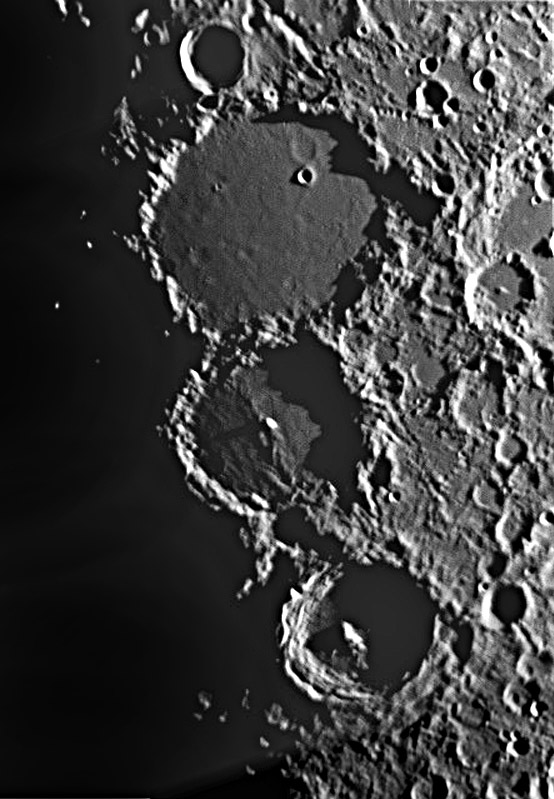Difference between revisions of "May 22, 2013"
| Line 15: | Line 15: | ||
<strong>Related Links</strong><br /> | <strong>Related Links</strong><br /> | ||
Rükl plate [https://the-moon.us/wiki/R%C3%BCkl_44 44]<br /> | Rükl plate [https://the-moon.us/wiki/R%C3%BCkl_44 44]<br /> | ||
| − | <em>[ | + | <em>[[21st Century Atlas of the Moon|21st Century Atlas]]</em> chart 17.<br /> |
<br /> | <br /> | ||
<p><b>Yesterday's LPOD:</b> [[May 21, 2013|A Masterpiece]] </p> | <p><b>Yesterday's LPOD:</b> [[May 21, 2013|A Masterpiece]] </p> | ||
Latest revision as of 08:33, 28 October 2018
Layers of "B"

image by Wyckliffe Hoffler, Titusville, FL
Old favorites are always a pleasure, especially when imaged by a first time contributor to LPOD. This low Sun view of the bumps and hollows on the floor of Ptolemaeus joins a series of Birt its rim would have been about 800 m above the surroundings. So "B" didn't form on the original floor of Ptolemaeus - which would have been about 5 km deep - so it impacted into a much higher level of crater fill. But what would that be? Did "B" form in between the next to last and last ejecta layer from Imbrium? Or was Ptolemeaus nearly filled with lavas, like Plato, before "B" excavated a crater, and was then draped by debris from Imbrium?
Chuck Wood
Technical Details
17 May 2013, 21:45-22:15 EDT. Celestron 14-inch SC (f/11, 3912mm) + Lumenera 070M camera; from a 13 frame mosaic processed them in Registax, and stitched the finals together with PS Elements.
Related Links
Rükl plate 44
21st Century Atlas chart 17.
Yesterday's LPOD: A Masterpiece
Tomorrow's LPOD: Another Go At Scheiner
COMMENTS?
Register, Log in, and join in the comments.



